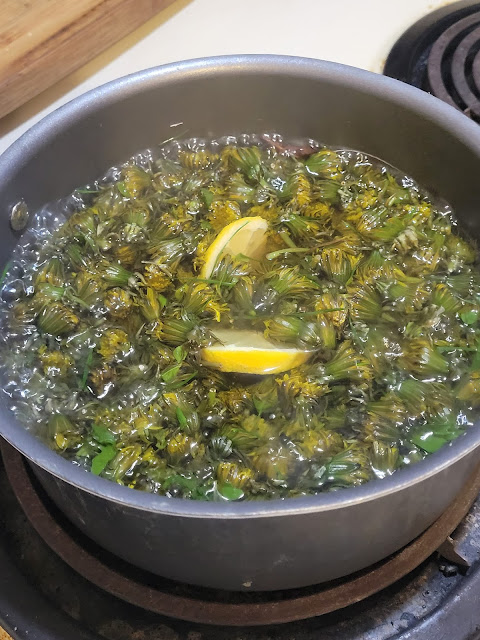Unlocking Intense Flavors: The Art of Slow-Roasted Vegetable Stock
Prepare to elevate your cooking to new heights with a vegetable stock that boasts unparalleled depth and richness.
In this article, we'll share a game-changing technique for creating a stunningly flavorful stock by slow-roasting the vegetables in an electric roaster. Say goodbye to hours of stovetop simmering and hello to a hands-off approach that yields remarkable results. By maximizing the natural flavors of the vegetables through extended roasting, you'll unlock a stock that will become a secret weapon in your culinary arsenal. Join us as we dive into the process of slow-roasting and canning this vegetable elixir, ensuring your kitchen is always stocked with the richest color vegetable stock you've ever made.
Recipe: Slow-Roasted Vegetable Stock
Ingredients:
- - 4 large carrots, roughly chopped
- - 4 celery stalks, roughly chopped
- - 2 large onions, quartered
- - 4 cloves of garlic, peeled
- - 1 large leek, cleaned and roughly chopped
- - 1 parsnip, roughly chopped
- - 2 tomatoes, halved
- - 1 tablespoon olive oil
- - 1 tablespoon tomato paste
- - 2 bay leaves
- - 8-10 sprigs of fresh thyme
- - 1 teaspoon whole black peppercorns
- - 1 gallon (16 cups) of filtered water
Equipment:
- - Electric roaster
- - Canning jars with lids
Instructions:
1. Preparing the Vegetables:
- Preheat your electric roaster to 150°F (65°C).
- In a large mixing bowl, combine the chopped carrots, celery, onions, garlic, leek, parsnip, and tomatoes.
- Drizzle the vegetables with olive oil and toss to coat evenly.
2. Slow-Roasting the Vegetables:
- Transfer the vegetable mixture to the preheated electric roaster.
- Allow the vegetables to roast at 150°F (65°C) for the entire weekend, approximately 48 hours.
- Every 12 hours, gently stir the vegetables to ensure even roasting and prevent any sticking or burning.
3. Creating the Vegetable Stock:
- After the weekend of slow-roasting, carefully transfer the roasted vegetables to a large stockpot.
- Add the tomato paste, bay leaves, fresh thyme, and whole black peppercorns to the pot.
- Pour in the filtered water, ensuring that the vegetables are fully submerged.
4. Simmering the Stock:
- Place the stockpot on the stove over medium heat and bring the mixture to a boil.
- Reduce the heat to low and let the stock simmer for 2-3 hours, allowing the flavors to meld and intensify.
- Skim off any impurities or foam that rise to the surface during the simmering process.
5. Straining and Canning:
- Once the stock has simmered to your desired depth of flavor, remove the pot from heat.
- Using a fine-mesh strainer or cheesecloth, strain the stock into a clean container to remove any solids.
- Allow the stock to cool to room temperature before transferring it to canning jars.
- Seal the jars with lids and store them in a cool, dark place.
6. Utilizing the Vegetable Stock:
- Your slow-roasted vegetable stock is now ready to enhance a wide variety of dishes.
- Use it as a flavor-packed base for soups, stews, sauces, and risottos.
- It can also be used to add depth and complexity to vegetarian and vegan recipes.
By adopting the slow-roasting technique and incorporating an electric roaster into your vegetable stock-making process, you've unlocked a new level of flavor and richness.
This hands-off approach allows the vegetables to develop deep caramelization and intensify their natural flavors, resulting in a stock that will elevate your culinary creations to new heights. By canning the stock, you guarantee a long shelf life, ensuring you always have this vibrant elixir at your fingertips. Get ready to infuse your dishes with the richest color vegetable stock you've ever made, and savor the depth and complexity it brings to your favorite recipes.






















Comments